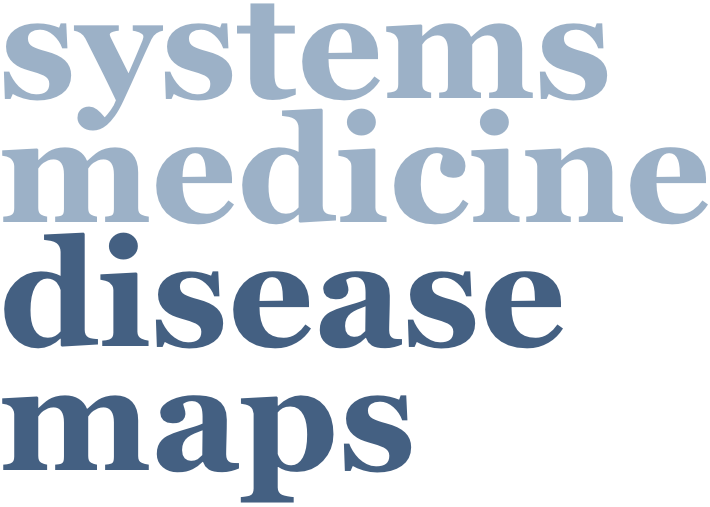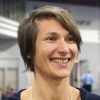
Sjogren’s syndrome
Sjogren Map
Development status: Active development within a PhD project
Disease IDs: DOID:12894, ICD10CM:M35.0, MESH:D012859, MONDO:0010030
Sustainable support: University of Evry, MINERVA platform
Construction tool: CellDesigner
Funding: Doctoral School “Structure and Dynamics of Living Systems”
Contact: Sacha E Silva-Saffar, Université Paris-Saclay, sacha.e-silva-saffar(at)universite-paris-saclay.fr
Sjögren’s syndrome, or Gougerot-Sjögren syndrome, is a systemic autoimmune disease that causes a triad of symptoms: dryness (eyes, mouth, skin), pain (articular, muscular) and fatigue. The onset is still unknown and can happen either spontaneously (primary Sjögren) or set-off during a precedent autoimmune disease such as Rheumatoid Arthritis or systemic lupus erythematosus (secondary Sjögren). The underlying cell interactions and molecular pathways of Sjogren’s pathogenesis are still researched, but the current theory of Sjogren’s syndrome development is the “autoimmune epithelitis” which is characterized by an inflammation of the superficial layer of glands.
Affecting between 0.01% and 0.7% of the population depending on the degree of criteria chosen for the patient inclusions, recent studies in Europe for Primary Sjogren’s disease found the estimation of prevalence to be less than the threshold of orphan diseases, 0.05% (Cornec and Chiche, 2015). The sex-ratio is mostly unbalanced because women are 9 to 20 times more susceptible to develop the disease. Approximately one third of the patient will develop systemic complications such as vasculitis, peripherical neuropathy, renal involvement or interstitial lung involvement. The most feared systemic complication is the apparition of a low-grade lymphoma (MALT) which occurs for approximately 5-10% of the patients, representing 5 to 15 times more risk than the general population.
There is currently no treatment indicated for Sjogren’s syndrome, only symptomatic treatments are given to release patients from dryness and pain discomfort with mostly lubricants and antalgics. Depending on the severity of the disease, Disease-modifying anti rheumatic drugs (DMARDs) originally given for other autoimmune diseases, namely synthetic DMARDs (Corticosteroids, Hydroxychloroquine, Methotrexate, etc.) or biological DMARDs (B cell Depletors) can be used.
The University of Evry, Paris Saclay is developing a detailed molecular map for Sjogren’s syndrome, based on literature evidence, pathway databases and Omic data. The collaboration with Kremlin Bicêtre hospital, the French national reference center for Sjogren’s syndrome, allows to reach a state-of-the-art on this disease knowledge by using clinician expertise. This map (static network) representing interaction between cells and biological entities will try to capture current knowledge underlying Sjogren’s pathogenesis. It will also serve as a template for modeling purposes, using tools and pipelines previously developed in Genhotel laboratory. On this matter, by observing the system behavior in several conditions, dynamical modeling will be used to address several biological questions. The main objectives will be to understand how the system evolves towards certain cellular and molecular phenotypes and to try and discover molecular targets of interest.
Development Team
 |
Sacha E Silva-Saffar, MSc University of Evry, University of Paris-Saclay, France Pharmacist, PhD Student GenHotel EA3886 European Research Laboratory for Rheumatoid Arthritis, Genopole, Evry |
 |
Anna Niarakis, PhD University of Evry, University of Paris-Saclay, France Associate Professor, Department of Biology GenHotel EA3886 European Research Laboratory for Rheumatoid Arthritis, Genopole, Evry |
 |
Gaetane Nocturne, MD, PhD Bicêtre Hospital, Le Kremlin-Bicêtre, France Rheumatologist, Researcher |
 |
Marie Croquet, BSc University of Evry, University of Paris-Saclay, France Intern |
Funding
PhD project “Computational systems biology approaches for deciphering the immune-epithelial cellular interplay in Sjögren syndrome” is funded by the Doctoral School “Structure and Dynamics of Living Systems”.